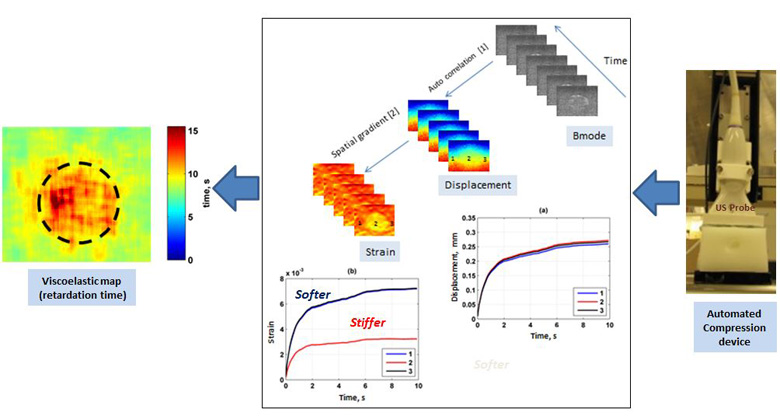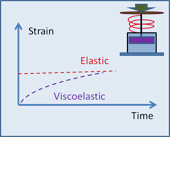
Such a device should be lightweight, portable and easy to use for patient studies to capture tissue dynamics under external stress. We present the design of an automated compression device for studying the creep response of materials with tissue-like behaviors. The device can be used to apply a ramp-and-hold force excitation for a predetermined duration of time and it houses an ultrasound probe for monitoring the creep response of the underlying tissue. To validate the performance of the device, several creep tests were performed on tissue mimicking phantoms and the results were compared against those from a commercial mechanical testing instrument. Using a second order Kelvin-Voigt model and surface measurement of the forces and displacements, retardation times T1 and T2 were estimated from each test. Retardation time was calculated by fitting a second order Kelvin-Voigt model to the displacement and strain profiles obtained from the device. These tests showed strong agreement between our automated compression device and the commercial mechanical testing system, with an average relative error of 2.9% and 12.4 %, for T1 and T2 respectively. Also, we present the application of compression device to measure local retardation times for four different phantoms with different size and stiffness. The overall results of this work justify the suitability of this device for performing creep tests on tissue-like materials and in vivo study.

